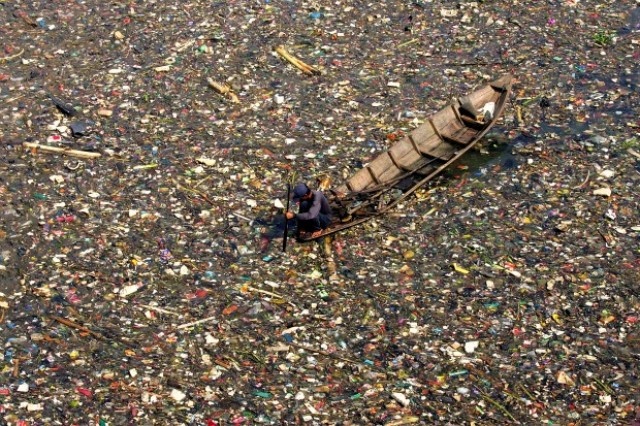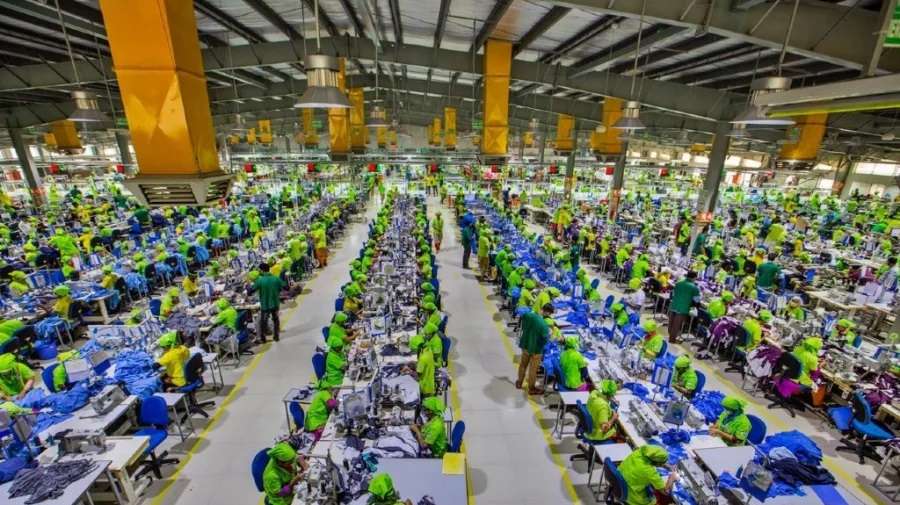"Every year, 80 billion garments are made globally generating 1.3 billion tons of fabric waste, says Mausmi Ambastha, Founder and COO, Threadsol. In her recent blog ‘You Waste 1.3 Billion Tonnes Of Fabric. What Are You Doing About It?’ Ambastha urges apparel manufacturers to look into the harmful impact on environment of the fabric wasted during manufacturing process and invest in greener technologies to make manufacturing environmentally sustainable. Indeed, environment issues are high on the agenda everywhere with air pollution, noise pollution, wastes from plastic, food and materials from our everyday lives being monitored."

Every year, 80 billion garments are made globally generating 1.3 billion tons of fabric waste, says Mausmi Ambastha, Founder and COO, Threadsol. In her recent blog ‘You Waste 1.3 Billion Tonnes Of Fabric. What Are You Doing About It?’ Ambastha urges apparel manufacturers to look into the harmful impact on environment of the fabric wasted during manufacturing process and invest in greener technologies to make manufacturing environmentally sustainable. Indeed, environment issues are high on the agenda everywhere with air pollution, noise pollution, wastes from plastic, food and materials from our everyday lives being monitored. But the fact is nearly 75 per cent of global fabric waste is discarded untreated and this waste either end up in landfills or is burnt thereby polluting water and land alike, she argues.
More fiber, more waste, more damage

Global supply of fibers has almost double in the last decade from 52.6 million tons to 100 million tons. More production means more waste, leading to a negative impact on the environment. Ambastha writes, textile wastes comprise 1.0 – 5.1 per cent of Municipal Solid Waste (MSW) compositions in the world regions. Although textile and apparel manufacturing has largely shifted to developing countries, textile waste remains a big concern both in developed and developing countries. In the US this waste is 4.95 per cent , China 1.3 and in a small country like Bhutan it is as high as 4.7 per cent. The environmental issues during the operational phase of textile manufacturing include the following:
Hazardous materials
Chemicals like Benzene, Cyanide, and Sulphate are discharged as effluents in the manufacturing of textiles which pose a serious health hazard.
Waste water
She points out that the textile industry utilises various chemicals and large amount of water during the production process. “The water is mainly used for application of chemicals onto fibers and rinsing of the final products. The waste water produced during this process contains a large amount of dyes and chemicals containing traces of metals such as Cr, Cu and Zn which are capable of harming the environment and human health. The textile waste water can cause hemorrhage, ulceration of skin, nausea, skin irritation and dermatitis. The chemicals present in the water block the sunlight and increase the biological oxygen demand thereby inhibiting photosynthesis and re-oxygenation.”
Emissions to air
Some textile manufacturing operations result in significant air pollution. Finishing processes (e.g. coating and dyeing operations) are some of these. Other significant sources of air emissions include drying, printing, fabric preparation, and wastewater treatment residues. “Solvents may be emitted from coating / treatment finishing processes, drying ovens, and high-temperature drying and curing. Other potential emissions include formaldehyde, acids (especially acetic acid), and other volatile compounds, such as carriers and solvents, emitted during dyeing operations and from wastewater treatment operations. Solvent vapors may contain toxic compounds such as acetaldehyde, chlorofluorocarbons, dichlorobenzene, ethyl acetate, methylnaphthalene, chlorotoluene, among others.”
Energy consumption
Textile manufacturing also results using up of a lot of energy resources. Heat consumption is particularly significant in drying and curing operations and in activities involving wet treatments.
Solid and liquid wastes Then there are solid and liquid wastes that are left out these include trials, selvedge, trimmings, cuttings of fabrics, and yarns; spent dyes, pigments, and printing pastes; and sludge from process wastewater treatment containing mainly fibers and grease.
Steps to be taken
Ambastha says, the Americans generate nearly 13 million tons of textile waste every year, while British generate 1.12 million tons. And even though the British seem to generate less waste, one in five British are known to throw away a garment after one wear. Statistically this means $127 million of clothing in landfills every year. Also, 15 per cent of fabric for clothing ends up on the cutting floor. Then in China, millions of unused fabrics from mills are wasted every year just because the colour dyed on them was wrong. What’s more a single mill in China uses up 200 tons of water for each ton of fabric it dyes. And many rivers water run the colour of the season as effluent plants are missing. Ambastha there urges the industry to invest time and energy to be more aware of the wastage and the terrible environmental impact of manufacturing. ThreadSol too offers solutions like intelloBuy and intelloCut to reduce fabric wastage in factories by upto 10 per cent, thereby boosting profits by 50 per cent.












